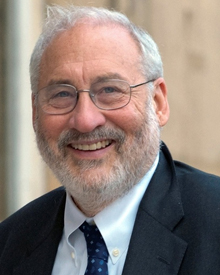Joseph Eugene Stiglitz

Joseph Eugene Stiglitz is a noted American economist, public policy analyst and University Professor at Columbia University. He won the Nobel Memorial Prize in Economic Sciences for his work on asymmetric information in 2001. He was senior vice president and chief economist of the World Bank from 1997-2000 and is a former member and chairman of the (US president's) Council of Economic Advisers.In 1979 he was awarded the John Bates Clark Awardby the American Economic Association to the economist under 40 who has made the most significantcontribution to the field.
Professor Stiglitz helped create a new branch of economics, "The Economics of Information", that explored the consequences of information asymmetries and pioneered such pivotalconcepts as adverse selection and moral hazard,which now serve as standard tools for theorists and for policy analysts. He has made major contributions to macroeconomics and monetary theory, development economics and trade theory, publicand corporate finance, the theories of industrial organization and rural organization,as well as welfare economics and income and wealth distribution.
He is a prolific writer and his work has helped explain the circumstances in which markets do not work well, andhow selective government intervention can improve their performance. He has published over 300 technical articles and has founded one of the leading economics journals “The Journal of Economic Perspectives”. His book Globalizationand Its Discontents (W.W. Norton June 2001) has been translated into 35 languages. Other recent books include “The Roaring Nineties” (W.W. Norton, 2003); “Making Globalization Work”(W.W. Norton and Penguin/Allen Lane, 2006)and “Freefall: America, Free Markets, and the Sinking of the World Economy”(W.W. Norton and Penguin/ Allen Lane, 2010).
Joseph Eugene Stiglitz earned his bachelor’s degree from Amherst College and his PhD from MIT. He worked with many noted economists on both sides of the Atlantic and taught at MIT, Yale, Stanford, Oxford, and Princeton before joining Columbia University.